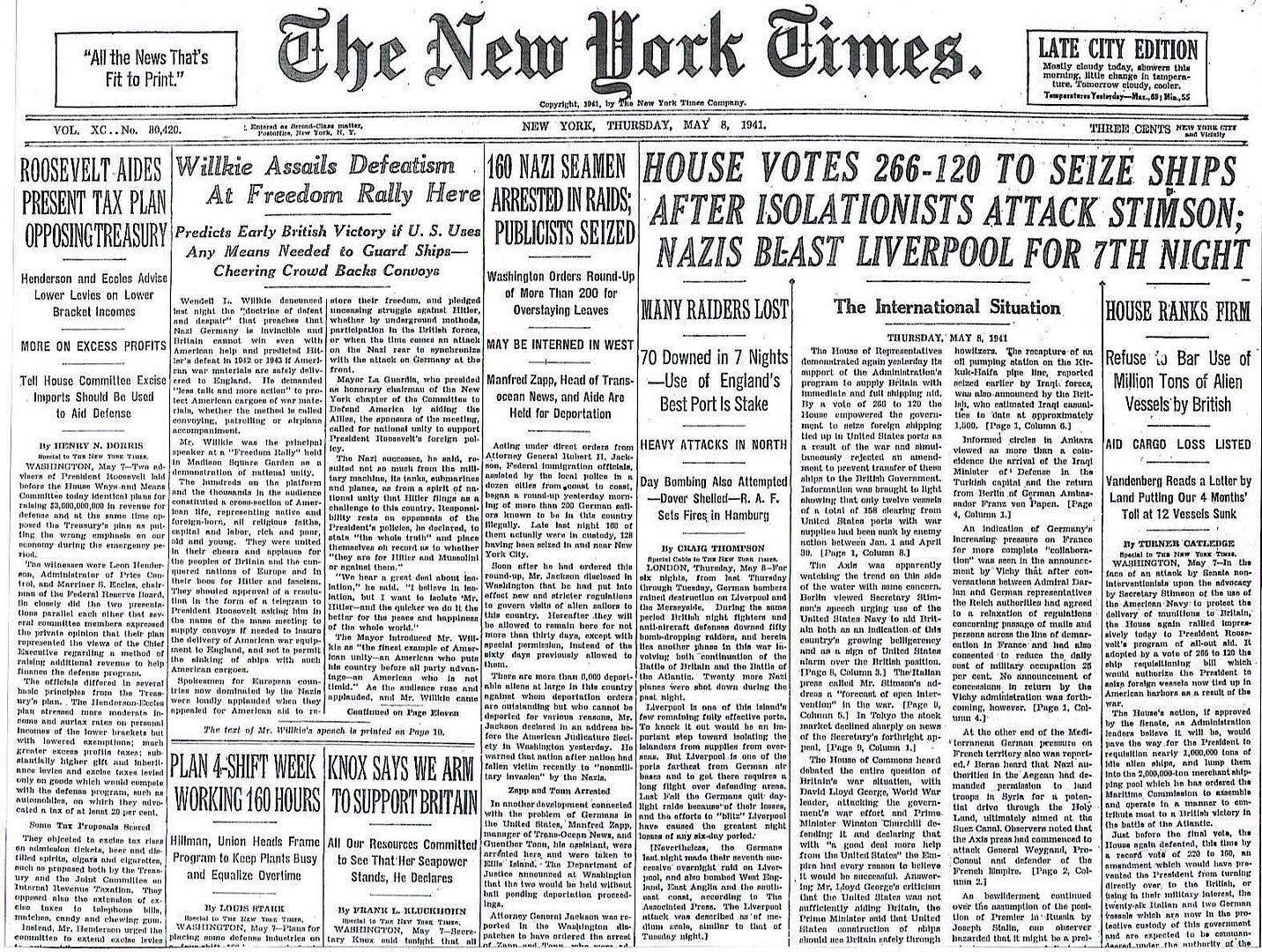
Posted on 05/08/2011 6:30:54 AM PDT by Homer_J_Simpson

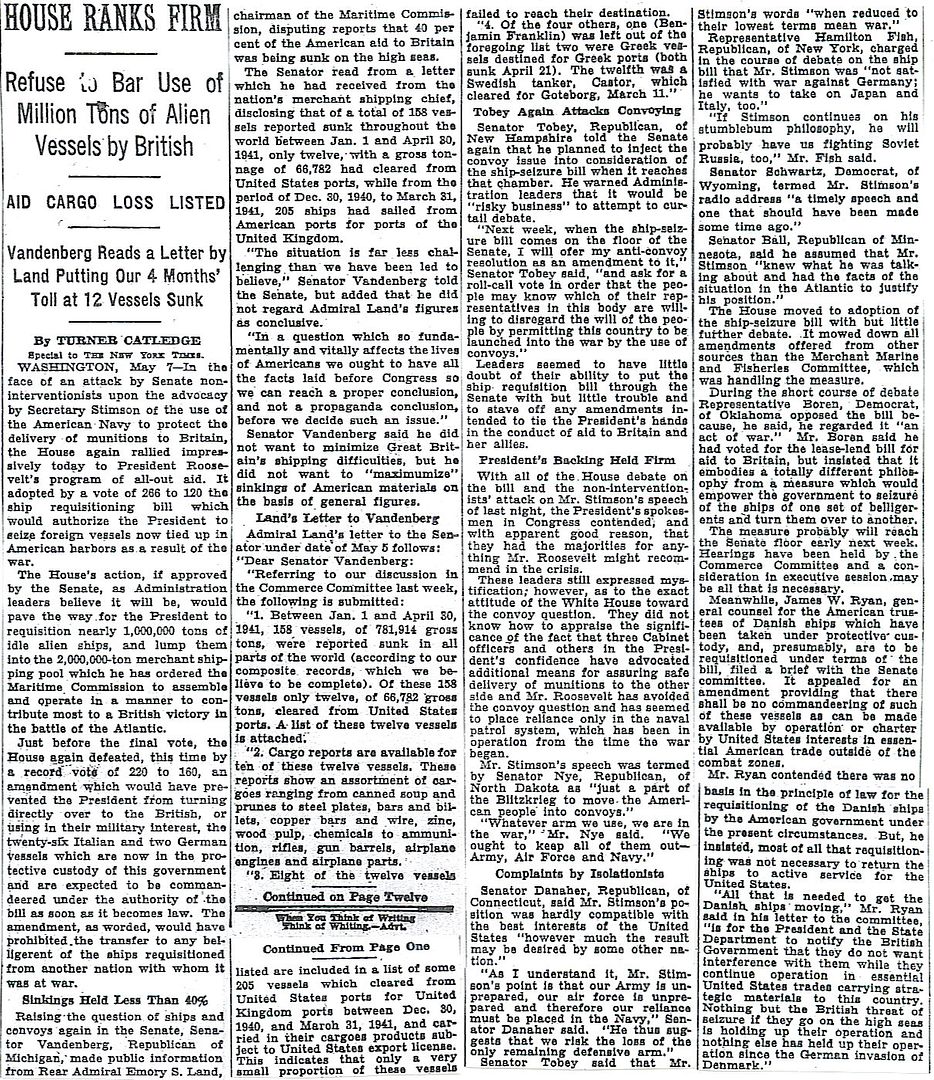
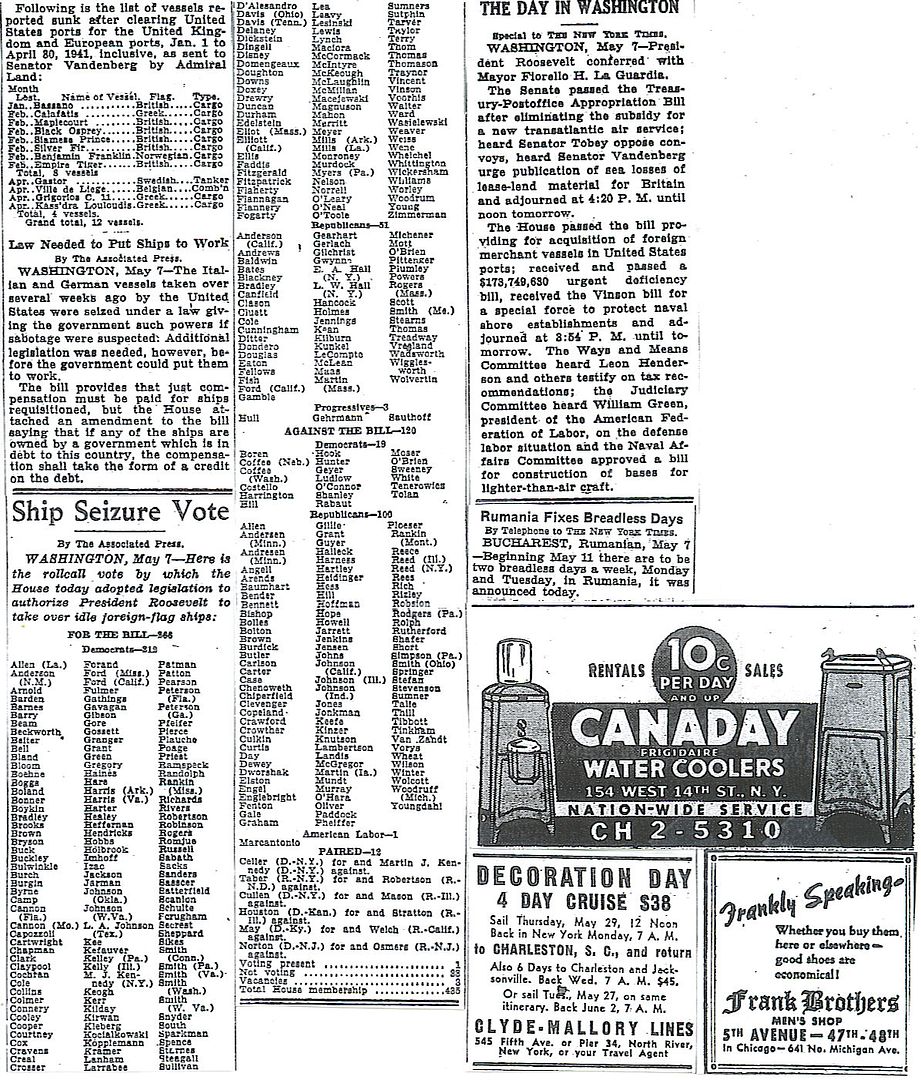
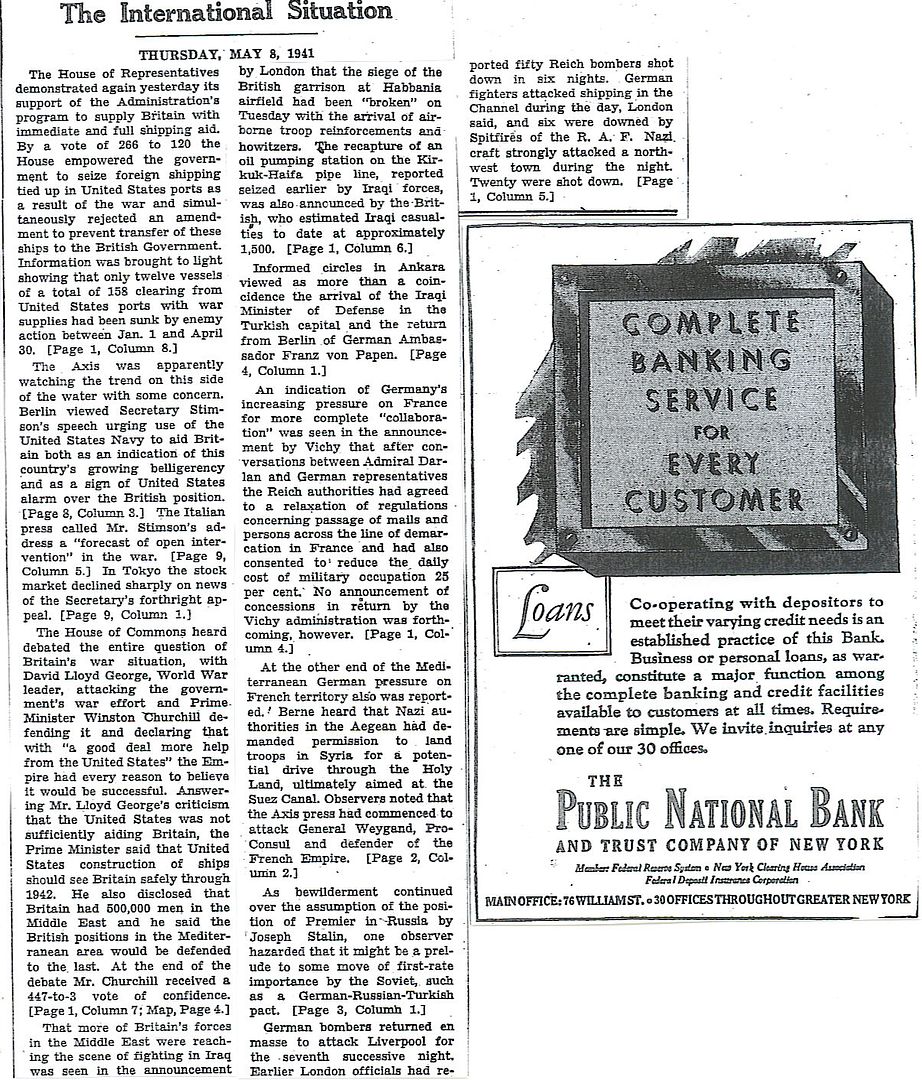
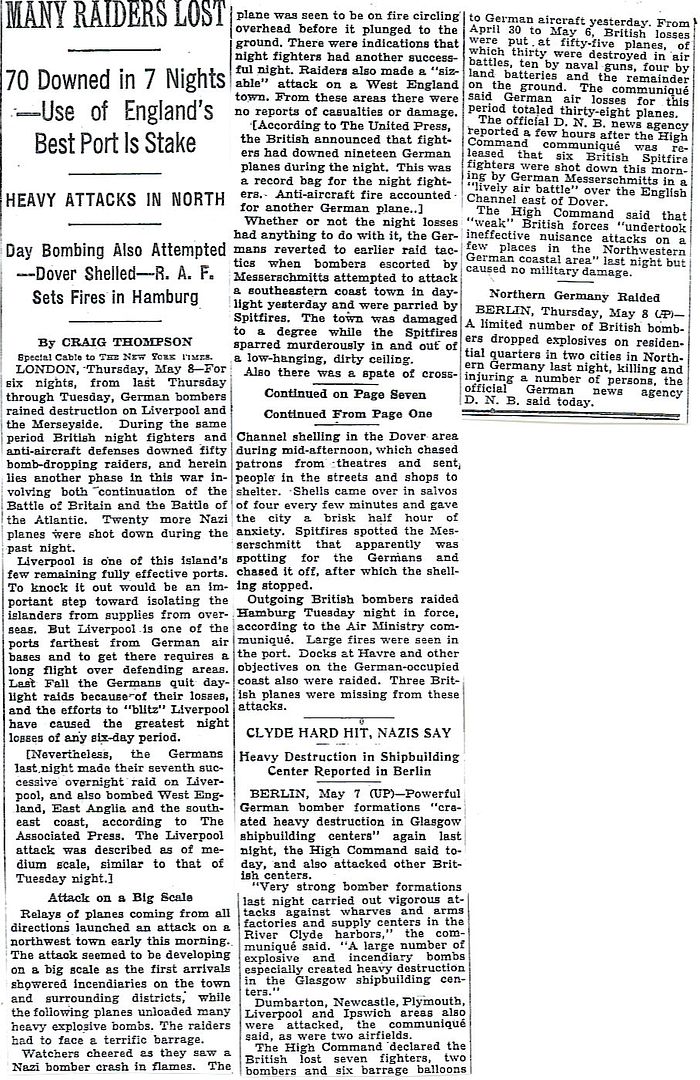
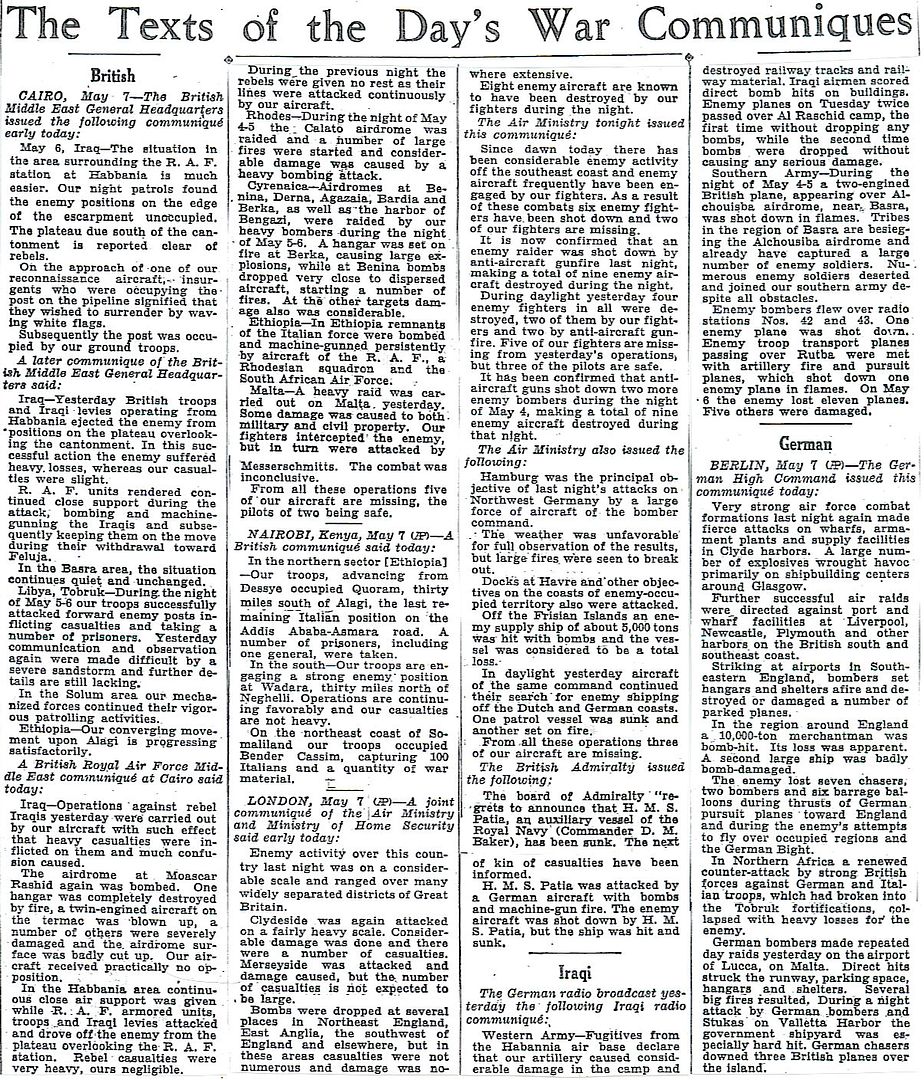
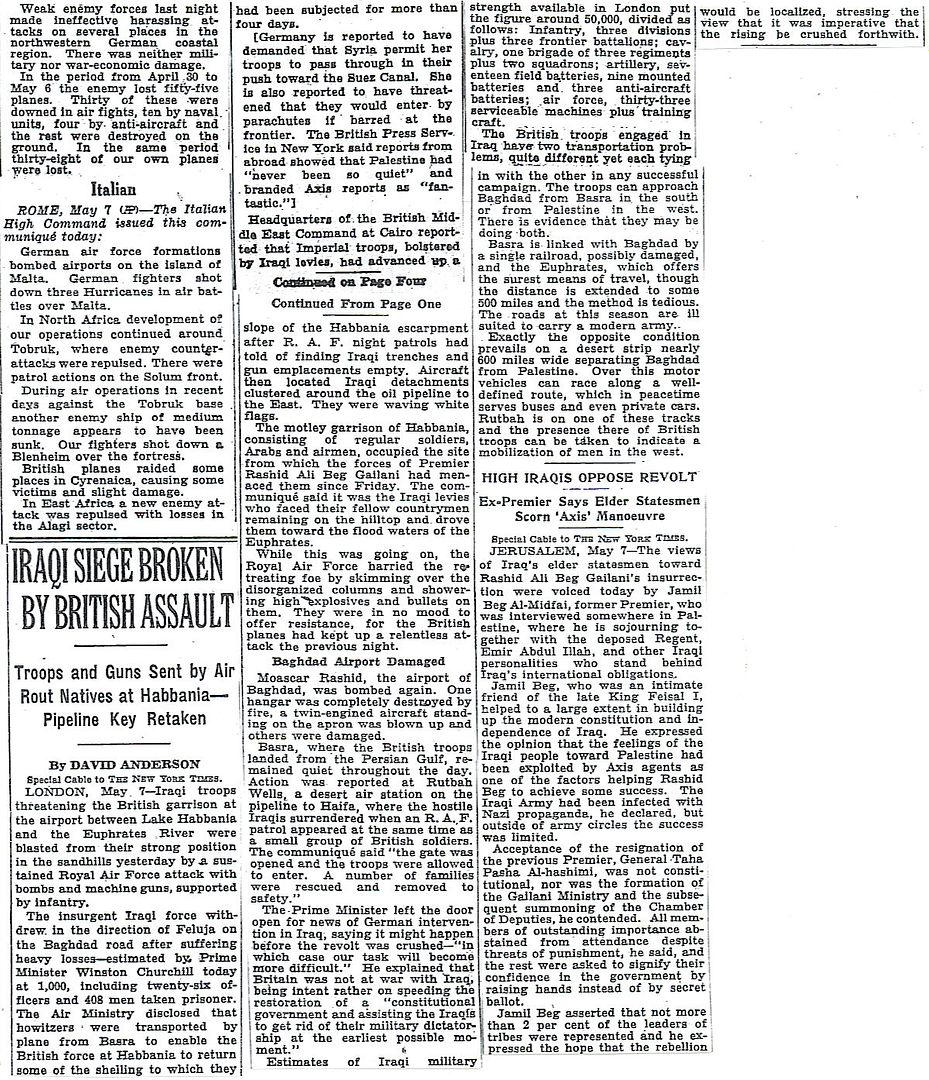
I guess our government back then was just beginning to realize that two big oceans was not going to keep us safe in the world, when dictators were on the verge of controlling everything else.
Someone needs to forward these articles to Ron Paul’s office.
http://www.onwar.com/chrono/1941/may41/f08may41.htm
German raider sunk in Indian Ocean
Thursday, May 8, 1941 www.onwar.com
In the Indian Ocean... The British heavy cruiser Cornwall finds and sinks the German raider Pinguin near the Seychelles. The Pinguin has sunk 28 ships of 136,550 tons during its cruise.
In the Mediterranean... There are air attacks on the eastward and westward bound British convoys. The carrier with each convoy engages the attacking Italian planes.
In East Africa... The Amba Alagi fighting continues. Indian forces take the the Falagi Pass and three small peaks south of Amba Alagi itself.
http://homepage.ntlworld.com/andrew.etherington/month/thismonth/08.htm
May 8th, 1941
UNITED KINGDOM:
London: Churchill writes to Ismay:
“I must have the advice of the Staffs upon the Syrian business available for Cabinet this morning. A supreme effort must be made to prevent the Germans getting a foothold in Syria with small forces and then using Syria as a jumping-off ground for the air domination of Iraq and Persia. ... We ought to help in every way without minding Vichy.”
RAF Bomber Command: 359 bombers led the strongest mission yet against Germany. Of these aircraft, 317 attacjed Hamburg and Bremen.
RAF Fighter Command: During the night German forces made simultaneous raids on 20 British airfields.
Minesweeping trawler HMS Silicia mined and sunk off the Humber. (Dave Shirlaw)
Submarine HMS Sickle laid down. (Dave Shirlaw)
GERMANY:
U-569 commissioned.
U-515 laid down. (Dave Shirlaw)
ITALY: “Acquarone”, [the King’s secretary and special assistant] says the Duke of Spoleto is proud of the task which awaits him, but concerned about losing his liberty. “When we looked for him, to give him the news, we managed to find him, only after twenty-four hours, in a Milan hotel, where he was hiding in the company of a young girl.”” (Mike Yaklich)
MEDITERRANEAN SEA: Tiger Convoy comes under air attack, first by the Italian Air Force, then the Luftwaffe. Over the day, Ark Royal’s twelve Fairey Fulmars drove off over fifty aircraft, with the assistance of targeting information from HMS Sheffield’s radar and anti-aircraft fire from the escorts. During the initial waves, one Fulmar is lost, killing Flight Lieutenant Rupert Tillard and Lieutenant Mark Somerville, Admiral Somerville’s nephew; another is destroyed with the aircrew recovered, while others are damaged.
INDIAN OCEAN: On patrol north of the Seychelles, heavy cruiser HMS Cornwall finds and sinks the raider ‘Pinguin’. This is the first raider to be hunted down, having accounted for 28 ships of 136,500 tons.
Alex Gordon adds:
“Pinguin” (ship 33) under Cmdr. Ernst-Felix Krüder began her war cruise on 15 June 1940. Pinguin sank 12 ships, captured 16 as prizes, whilst another four ships were attributed to her mines. The 136 550 tons referred to, is the aggregate of both sinkings and captures. However, the biggest prize of all was taken when “Pinguin” captured the entire Norwegian Antarctic Whaling fleet, including two factory ships, eleven whalers, and a tanker without firing a shot! After the war ended both of the factory ships were found damaged by Allied bombing in a French Atlantic port.
COMMONWEALTH OF THE PHILIPPINES: USAT Washington arrived in Manila with 39 more fliers. (Marc Small)
AUSTRALIA: Minesweeper HMAS Warrnambool launched. (Dave Shirlaw)
CANADA: Training ship HMCS Millicette assigned to HMCS Montcalm. (Dave Shirlaw)
ATLANTIC OCEAN: At 0800 on 7 May, U-97 spotted two merchantmen on westerly course SE of Cape Farewell and four hours later two others that followed the first group. All ships had been dispersed from Convoy OB-317. The U-boat chased the first ships and fired at 1704 hours a torpedo at the Ramillies, but missed and was not able to fire at the ships of the second group because they were too far away. So the U-boat had to overtake the first group again during the night and fired at 1214 hours on 8 May another torpedo at the same ship but again missed. At 1813 a third torpedo was fired which hit the Ramillies and stopped her but did not sink. At 1848 a coup de grâce was fired that malfunctioned, but the second at 1903 hit the ship in the stern and caused her to sink fast in the vertical. The master, 25 crewmembers and three gunners were lost. Eleven crewmembers and one gunner were picked up by the British merchantman Geddington Court and landed at Halifax. (Dave Shirlaw)
http://worldwar2daybyday.blogspot.com/
Day 616 May 8, 1941
In the Arabian Sea 400 miles off Somaliland, British cruiser HMS Cornwall responds to distress signals yesterday from tanker British Emperor. A Walrus seaplane finds German armed merchant cruiser Pinguin (disguised as the Norwegian MV Tamerlane). Both ships open fire at 5.14 PM. HMS Cornwall is stopped by a shell which floods the engine room (1 killed, 3 wounded). Outgunned, Pinguin’s crew prepares to abandon ship when she obliterated by an 8-inch shell which hits a store of 130 mines (341 crew and 214 prisoners killed, 60 crew and 22 prisoners rescued by HMS Cornwall). In 357 days, Pinguin sailed 59,000 miles sinking or capturing 28 ships and laying mines that sank 4 more (total 154,710 tons).
At dawn, Indian troops close in on the Italian stronghold at Amba Alagi, Ethiopia, taking the Falagi Pass to the East and 3 small peaks (Centre Hill, Khaki Hill and Castle Hill) to the South. Italians counterattack, recovering Centre and Khaki Hills.
In the middle of the North Atlantic, U-97 sinks British SS Ramillies (29 dead and 12 survivors).
Overnight, Luftwaffe bombs Hull for the second night. In one of the heaviest RAF raids so far, 359 bombers attack targets in Germany, including Hamburg and Bremen.
That is true. I guess some people do not get the fact we can no longer ignore threats overseas.
The largest-calibre artillery piece of modern times, 'LittleDavid' was originally a device for testing aircraft bombs by firing them at various targets. Someone suggested that it could be used as a gun proper, and with the invasion of Japan in prospect the US Army welcomed the idea of a monster howitzer to smash Japanese fortifications.
Specification 'LittleDavid'Calibre: 914 mm (36 in)
Length of piece: with elevating arc 8.534 m (28 ft 0 in)
Weight complete: 82808 kg (182,560 lb)
Elevation: +45° to +65°
Traverse: 26°
Muzzle velocity: not recorded Maximum range: 8687 m (9,500 yards)
Shell weight: 1678 kg (3,700 lb)
Despite the fact that many artilllery pieces were much larger than the strange device known as 'Little David', the fact remains that this weapon still holds the record of having the largest calibre of any modern artillery piece at no less than 914 mm (36 in), and not even the largest German railway gun, the huge 80-cm K(E), got anywhere near that with its calibre of 800 mm (31.5 in)
So the Nazis were the forerunners of Greenpeace?
Sure. And Planned Parenthood, and other popular NGO's also.
Disclaimer: Opinions posted on Free Republic are those of the individual posters and do not necessarily represent the opinion of Free Republic or its management. All materials posted herein are protected by copyright law and the exemption for fair use of copyrighted works.